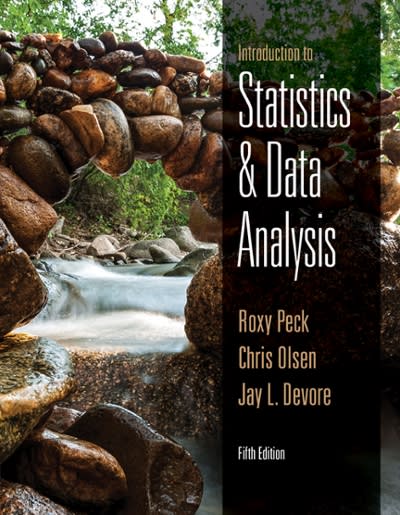7.112 A coin is flipped 25 times. Let x be the number of flips that result in...
Question:
7.112 A coin is flipped 25 times. Let x be the number of flips that result in heads (H). Consider the following rule for deciding whether or not the coin is fair:
Judge the coin fair if 8 # x # 17.
Judge the coin biased if either x # 7 or x $ 18.
a. What is the probability of judging the coin biased when it is actually fair?
b. What is the probability of judging the coin fair when P(H) 5 .9, so that there is a substantial bias?
Repeat for P(H) 5 .1.
c. What is the probability of judging the coin fair when P(H) 5 .6? when P(H) 5 .4? Why are these probabilities so large compared to the probabilities in Part (b)?
d. What happens to the “error probabilities” of Parts
(a) and
(b) if the decision rule is changed so that the coin is judged fair if 7 # x # 18 and unfair otherwise? Is this a better rule than the one first proposed? Explain.
Step by Step Answer:

Introduction To Statistics And Data Analysis
ISBN: 9781305445963
5th Edition
Authors: Roxy Peck, Chris Olsen, Jay L Devore






